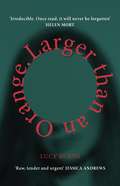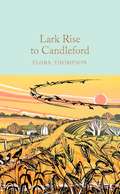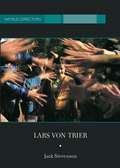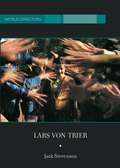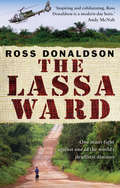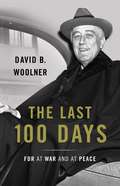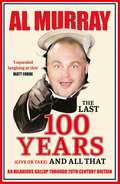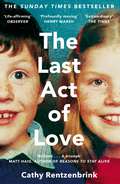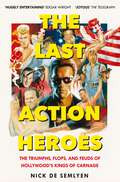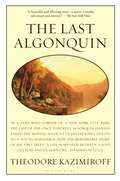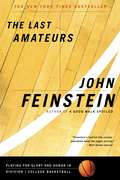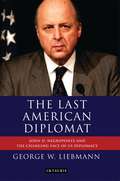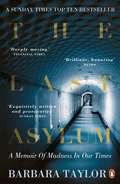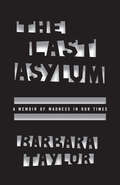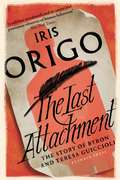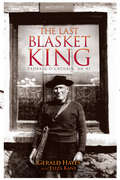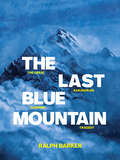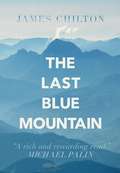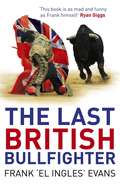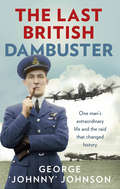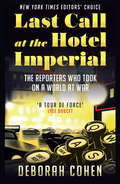- Table View
- List View
Larger than an Orange
by Lucy Burns'Raw, tender and urgent' Jessica Andrews, author of Saltwater'Irreducible. Once read, it will never be forgotten' Helen Mort, author of Division StreetThis is the story of an abortion. The days and hours before the first visit to the clinic and the weeks and months after.The pregnancy was a mistake and the narrator immediately arranges a termination. But a gulf yawns between politics and personal experience. The polarised public debate and the broader cultural silence did not prepare her for the physical event or the emotional aftermath. She finds herself compulsively telling people about the abortion (and counting those who know), struggling at work and researching the procedure. She feels alone in her pain and confusion.Part diary, part prose poem, part literary collage, Larger than an Orange is an uncompromising, intimate and original memoir. With raw precision and determined honesty, Lucy Burns carves out a new space for complexity, ambivalence and individual experience.'Lucy Burns' writing on choice and its aftermath is boldly innovative, achingly human, and powerfully vulnerable' Dr Elinor Cleghorn, author of Unwell Women'Rapturous, engrossing and beautifully impossible' Holly Pester, author of Comic Timing
Lark Rise to Candleford: A Triology (Macmillan Collector's Library)
by Flora ThompsonLark Rise to Candleford captures a piece of social history in this ever popular fictional account of an English rural upbringing between the wars. Part of the Macmillan Collector’s Library; a series of stunning, clothbound, pocket sized classics with gold foiled edges and ribbon markers. These beautiful books make perfect gifts or a treat for any book lover. This edition contains all three books – Lark Rise, Over to Candleford and Candleford Green with an introduction by Bill Gallagher, screenwriter of the hugely popular BBC television adaptation.Laura Timms spends her childhood in a country hamlet called Lark Rise. An intelligent and enquiring child, she is always attentive to the way of life around her – the lives of a farming community and nature as it transforms through the seasons, their working lives together and their celebrations. Whilst much is to be admired and cherished about her community, when she looks back on it as an adult she doesn’t shy away from describing hardship too. Laura attends the village school and leaves at the age of fourteen to work for the postmistress of the village of Candleford. There her eyes are opened to wider horizons.
Lars Von Trier: Lars Von Trier, Thomas Vinterberg, And The Gang That Took On Hollywood (World Directors)
by Jack StevensonWith the international success of Breaking the Waves (1996) and Dancer in the Dark (2000), Lars von Trier has established himself as a one of the most provocative and daring film directors working today. The founding father of Dogma 95, he made the movement's most controversial film, The Idiots (1998), and has played a leading role in the recent resurgence of Danish cinema. Yet despite his success, von Trier remains something of an polarising and enigmatic figure hailed as the new Godard by some and a charlatan by others. In this new study, Jack Stevenson explores the achievements as well as the paradoxes of Lars von Trier, assessing his life, work, and critical reception. The book follows von Trier from his early life as a troubled son of 'Cultural Radical' parents through to his student days at the Danish Film School, diligently spent making films that were as innovative and disturbing as his later features have proved to be. These films (consisting of the Europa and Gold-Hearted trilogies) are fully examined together with considerations of his creative detours into other media and his current work in progress, Dogville. Based in Denmark, the author brings a unique perspective to Lars von Trier creating a multi-dimensional portrait of the director. Utilising sources heretofore unavailable in English, Stevenson's lively yet fact-filled narrative is accessible to students and film enthusiasts alike. The book is indispensable to anyone interested in Lars von Trier and the broader issues that surround modern Danish film and its current renaissance.
Lars Von Trier (World Directors)
by Jack StevensonWith the international success of Breaking the Waves (1996) and Dancer in the Dark (2000), Lars von Trier has established himself as a one of the most provocative and daring film directors working today. The founding father of Dogma 95, he made the movement's most controversial film, The Idiots (1998), and has played a leading role in the recent resurgence of Danish cinema. Yet despite his success, von Trier remains something of an polarising and enigmatic figure hailed as the new Godard by some and a charlatan by others. In this new study, Jack Stevenson explores the achievements as well as the paradoxes of Lars von Trier, assessing his life, work, and critical reception. The book follows von Trier from his early life as a troubled son of 'Cultural Radical' parents through to his student days at the Danish Film School, diligently spent making films that were as innovative and disturbing as his later features have proved to be. These films (consisting of the Europa and Gold-Hearted trilogies) are fully examined together with considerations of his creative detours into other media and his current work in progress, Dogville. Based in Denmark, the author brings a unique perspective to Lars von Trier creating a multi-dimensional portrait of the director. Utilising sources heretofore unavailable in English, Stevenson's lively yet fact-filled narrative is accessible to students and film enthusiasts alike. The book is indispensable to anyone interested in Lars von Trier and the broader issues that surround modern Danish film and its current renaissance.
The Lassa Ward: One Man's Fight Against One Of The World's Deadliest Diseases
by Ross DonaldsonIn the summer of 2003, a perilous helicopter descent delivered Ross Donaldson, an American medical student in his twenties, into Sierra Leone. With abundant schooling but little practical experience, Ross wanted to save the world. Little did he know that by the end of his journey, it would be he who would need rescue.With rebels fighting just across the border in Liberia, humanitarian need quickly swept Ross southward towards makeshift refugee camps and the heart of danger. There, he had his first terrifying encounter with the highly contagious Lassa Virus. Working on the Lassa Fever Ward, he was wholly unprepared for what he would find, and for twist of fate that saw him running the facility alone, with only a handful of untrained nurses to help him.Based on his personal journal, this gripping memoir details the time Ross spent on the Lassa Ward, and his own battle with a potentially fatal illness. It is a real-life thriller that not only tells the adventure-packed tale of a modern-day hero, but also bears witness to a people in need, and the struggle of those who risk their daily comforts, and even their lives, to help them.
The Last 100 Days: FDR at War and at Peace
by David B. WoolnerA revealing portrait of the end of Franklin Delano Roosevelt's life and presidency, shedding new light on how he made his momentous final policy decisions The first hundred days of FDR's presidency are justly famous, often viewed as a period of political action without equal in American history. Yet as historian David B. Woolner reveals, the last hundred might very well surpass them in drama and consequence. Drawing on new evidence, Woolner shows how FDR called on every ounce of his diminishing energy to pursue what mattered most to him: the establishment of the United Nations, the reinvigoration of the New Deal, and the possibility of a Jewish homeland in Palestine. We see a president shorn of the usual distractions of office, a man whose sense of personal responsibility for the American people bore heavily upon him. As Woolner argues, even in declining health FDR displayed remarkable political talent and foresight as he focused his energies on shaping the peace to come.
The Last 100 Days: FDR at War and at Peace
by David B. WoolnerA revealing portrait of the end of Franklin Delano Roosevelt's life and presidency, shedding new light on how he made his momentous final policy decisions The first hundred days of FDR's presidency are justly famous, often viewed as a period of political action without equal in American history. Yet as historian David B. Woolner reveals, the last hundred might very well surpass them in drama and consequence. Drawing on new evidence, Woolner shows how FDR called on every ounce of his diminishing energy to pursue what mattered most to him: the establishment of the United Nations, the reinvigoration of the New Deal, and the possibility of a Jewish homeland in Palestine. We see a president shorn of the usual distractions of office, a man whose sense of personal responsibility for the American people bore heavily upon him. As Woolner argues, even in declining health FDR displayed remarkable political talent and foresight as he focused his energies on shaping the peace to come.
The Last 100 Years (give or take) and All That: A hilarious gallop through 20th-century history
by Al MurrayA fascinating and hilarious gallop through twentieth-century British history, by comedian Al Murray.An awful lot has happened in the last 100 years or so. In fact, when you look at how much went on in the 20th century, it's amazing it didn't take longer than that. And what have we learnt? A few obvious lessons include: megalomaniac men with moustaches in charge of countries tend to turn out to be BAD; anyone who thinks they can explain let alone sort out the Middle East is WRONG; France simply cannot be relied upon; America may or may not be the cause of everything GOOD and BAD in the world (depending on who you ask).This isn't your bog-standard history book. We all know that history books (Which Shall Not be Questioned because they ARE ALL TRUE according to our History Teachers of Yore) are dry and dull, and they go on as if there's only ONE version of history (spoiler: it's all about perspective). Enter Al Murray, alter-ego of everyone's favourite Pub Landlord.Al knows his way around 20th century Britain, and he's good enough to illuminate it for you. From the Big Bang of the 20th Century, DOUBLEYOUDOUBLEYOU ONE, to the eve of the new Millennium (when all the computers in the World DIDN'T stop working and the Queen had to do the Hokey Cokey with Tony Blair) and all the forgotten tales in between, this is a brilliantly funny, irreverent and eye-opening whistle-stop tour of Britain since 1914.
The Last Act of Love: The Story of My Brother and His Sister
by Cathy RentzenbrinkA Richard and Judy Book club selection.In the summer of 1990, Cathy's brother Matty was knocked down by a car on the way home from a night out. It was two weeks before his GCSE results, which turned out to be the best in his school. Sitting by his unconscious body in hospital, holding his hand and watching his heartbeat on the monitors, Cathy and her parents willed him to survive. They did not know then that there are many and various fates worse than death. This is the story of what happened to Cathy and her brother, and the unimaginable decision that she and her parents had to make eight years after the night that changed everything. It's a story for anyone who has ever watched someone suffer or lost someone they loved or lived through a painful time that left them forever changed. Told with boundless warmth and affection, The Last Act of Love by Cathy Rentzenbrink is a heartbreaking yet uplifting testament to a family's survival and the price we pay for love.
The Last Action Heroes: The Triumphs, Flops, and Feuds of Hollywood's Kings of Carnage
by Nick de Semlyen'A blast' - Ian Rankin'A lively celebration of 1980s action stars' - The TimesFrom the editor of Empire magazine, this is the behind-the-scenes story of the golden age of the action movie, the stars who ruled 80s and 90s Hollywood and the beloved films – from Die Hard to The Terminator – that made them famous.Charting Sylvester Stallone and Arnold Schwarzenegger’s carnage-packed journey from enmity to friendship against the backdrop of Reagan’s America and the Cold War. It also reveals the untold stories of the colourful characters, from Steven Seagal to Bruce Willis, who ascended in their wake. These invincible action heroes used muscle, martial arts or the perfect weapon to save the day, becoming pop-culture titans.Drawing on candid interviews with the action stars themselves, plus their collaborators, friends and foes, The Last Action Heroes chronicles how, as the 1990s rolled in, the glory days of these macho men began to fade, but how the mayhem they wrought on screen and off excites us still.
The Last Algonquin
by Theodore KazimiroffAs recently as 1924, a lone Algonquin Indian lived quietly in Pelham Bay Park, a wild and isolated corner of New York City. Joe Two Trees was the last of his people, and this is the gripping story of his bitter struggle, remarkable courage, and constant quest for dignity and peace. By the 1840s, most of the members of Joe's Turtle Clan had either been killed or sold into slavery, and by the age of thirteen he was alone in the world. He made his way into Manhattan, but was forced to flee after killing a robber in self defense; from there, he found backbreaking work in New Jersey and Pennsylvania. Finally, around the time of the Civil War, Joe realized there was no place for him in the White world, and he returned to his birthplace to live out his life alone-suspended between a lost culture and an alien one. Many years later, as an old man, he entrusted his legacy to the young Boy Scout who became his only friend, and here that young boy's son passes it on to us.
The Last Amateurs: Playing for Glory and Honor in Division I College Basketball
by John FeinsteinAmerica's favorite sportswriter takes readers on a thrilling and unforgettable journey into the world of college basketball in this national bestseller. Like millions who love college basketball, John Feinstein was first drawn to the game because of its intensity, speed and intelligence. Like many others, he felt that the vast sums of money involved in NCAA basketball had turned the sport into a division of the NBA, rather than the beloved amateur sport it once was. He went in search of college basketball played with the passion and integrity it once inspired, and found the Patriot League. As one of the NCAA's smallest leagues, none of these teams leaves college early to join the NBA and none of these coaches gets national recognition or endorsement contracts. The young men on these teams are playing for the love of the sport, of competition and of their schools. John Feinstein spent a season with these players, uncovering the drama of their daily lives and the passions that drive them to commit hundreds of hours to basketball even when there is no chance of a professional future. He offers a look at American sport at its purest.
The Last American Diplomat: John D Negroponte and the Changing Face of US Diplomacy (International Library of Twentieth Century History)
by George W. LiebmannCan John D. Negroponte be described as 'The Last American Diplomat'? In a career spanning 50 years of unprecedented American global power, he was the last of a dying breed of patrician diplomats - devoted to public service, a self-effacing and ultimate insider, whose prime duty was to advise, guide and warn - a bulwark of traditional diplomatic realism against ideologue excess.Negroponte served as US ambassador to Honduras, Mexico, the Philippines and Iraq; he was US Permanent Representative to the UN, Director of National Intelligence and Deputy Secretary of State to George W. Bush. His was a high-flying and seemingly conventional career but one full of surprises. Negroponte opposed Kissinger in Vietnam, supported a 'proxy war' but opposed direct American military action against Marxists in Central America - facingbitter Congress opposition in the process. He swam against the floodtide of George W. Bush'sneocon-dominated administration, warning against the Iraq war as a possible new 'Vietnam'and criticising aspects of Bush's 'War on Terror'. He disconcerted the administration by arguingthat the re-establishment of Iraq would take as long as five years. And he was influential in international social and economic policy - working for the successful re-settlement of millions of refugees in Southeast Asia following the Vietnam War, issuing early warnings about the scourge of AIDS in Africa and successfully launching the North American Free Trade Agreement (NAFTA).George W. Liebmann's incisive account is based on personal and shared experience but it is nohagiography; beyond the author's discussions with Negroponte, this book is deeply researched in US state papers and includes interviews with leading actors. It will provide fascinating reading for anyone interested in the inside-story of American diplomacy, showing personal and policy struggles, and the underlying fissures present even in the world's last remaining superpower.
The Last Asylum: A Memoir of Madness in our Times
by Barbara TaylorThe Last Asylum is Barbara Taylor's haunting memoir of her journey through the UK mental health system.A RADIO 4 BOOK OF THE WEEKSHORTLISTED FOR THE RBC TAYLOR PRIZEIn July 1988, Barbara Taylor, then an acclaimed young historian, was admitted to what had once been England's largest psychiatric institution: Colney Hatch Lunatic Asylum, later known as Friern Hospital.This searingly honest, thought-provoking and beautifully written memoir is the story of the author's madness years, set inside the wider story of the death of the asylum system in the twentieth century. It is a meditation on her own experience of breakdown and healing, but also that of the millions of other people who have suffered, are suffering, will suffer mental illness.'Personal story, psychoanalytic process, the experience of madness, the feel of being an inpatient in the last days of Friern, the history of the asylum . . . A beautiful memoir, engrossing' Independent'Moving, brave and intelligent' Susan Hill, The Times'Dazzling. A great achievement, full of life and hope' Sunday TelegraphBarbara Taylor's previous books include an award-winning study of nineteenth-century socialist feminism, Eve and the New Jerusalem; an intellectual biography of the pioneer feminist Mary Wollstonecraft; and On Kindness, a defence of fellow feeling co-written with the psychoanalyst Adam Phillips. She is a longstanding editor of the leading history journal, History Workshop Journal, and a director of the Raphael Samuel History Centre. She teaches History and English at Queen Mary University of London.
The Last Asylum: A Memoir of Madness in Our Times
by Barbara TaylorIn the late 1970s, Barbara Taylor, then an acclaimed young historian, began to suffer from severe anxiety. In the years that followed, Taylor’s world contracted around her illness. Eventually, her struggles were severe enough to lead to her admission to what had once been England’s largest psychiatric institution, the infamous Friern Mental Hospital in North London. The Last Asylum is Taylor’s breathtakingly blunt and brave account of those years. In it, Taylor draws not only on her experience as a historian, but also, more importantly, on her own lived history at Friern— once known as the Colney Hatch Lunatic Asylum and today the site of a luxury apartment complex. Taylor was admitted to Friern in July 1988, not long before England’s asylum system began to undergo dramatic change: in a development that was mirrored in America, the 1990s saw the old asylums shuttered, their patients left to plot courses through a perpetually overcrowded and underfunded system of community care. But Taylor contends that the emptying of the asylums also marked a bigger loss, a loss of community. She credits her own recovery to the help of a steadfast psychoanalyst and a loyal circle of friends— from Magda, Taylor’s manic-depressive roommate, to Fiona, who shares tips for navigating the system and stories of her boyfriend, the “Spaceman,” and his regular journeys to Saturn. The forging of that network of support and trust was crucial to Taylor’s recovery, offering a respite from the “stranded, homeless feelings” she and others found in the outside world. A vivid picture of mental health treatment at a moment of epochal change, The Last Asylum is also a moving meditation on Taylor’s own experience, as well as that of millions of others who struggle with mental illness.
The Last Asylum: A Memoir of Madness in Our Times
by Barbara TaylorIn the late 1970s, Barbara Taylor, then an acclaimed young historian, began to suffer from severe anxiety. In the years that followed, Taylor’s world contracted around her illness. Eventually, her struggles were severe enough to lead to her admission to what had once been England’s largest psychiatric institution, the infamous Friern Mental Hospital in North London. The Last Asylum is Taylor’s breathtakingly blunt and brave account of those years. In it, Taylor draws not only on her experience as a historian, but also, more importantly, on her own lived history at Friern— once known as the Colney Hatch Lunatic Asylum and today the site of a luxury apartment complex. Taylor was admitted to Friern in July 1988, not long before England’s asylum system began to undergo dramatic change: in a development that was mirrored in America, the 1990s saw the old asylums shuttered, their patients left to plot courses through a perpetually overcrowded and underfunded system of community care. But Taylor contends that the emptying of the asylums also marked a bigger loss, a loss of community. She credits her own recovery to the help of a steadfast psychoanalyst and a loyal circle of friends— from Magda, Taylor’s manic-depressive roommate, to Fiona, who shares tips for navigating the system and stories of her boyfriend, the “Spaceman,” and his regular journeys to Saturn. The forging of that network of support and trust was crucial to Taylor’s recovery, offering a respite from the “stranded, homeless feelings” she and others found in the outside world. A vivid picture of mental health treatment at a moment of epochal change, The Last Asylum is also a moving meditation on Taylor’s own experience, as well as that of millions of others who struggle with mental illness.
The Last Asylum: A Memoir of Madness in Our Times
by Barbara TaylorIn the late 1970s, Barbara Taylor, then an acclaimed young historian, began to suffer from severe anxiety. In the years that followed, Taylor’s world contracted around her illness. Eventually, her struggles were severe enough to lead to her admission to what had once been England’s largest psychiatric institution, the infamous Friern Mental Hospital in North London. The Last Asylum is Taylor’s breathtakingly blunt and brave account of those years. In it, Taylor draws not only on her experience as a historian, but also, more importantly, on her own lived history at Friern— once known as the Colney Hatch Lunatic Asylum and today the site of a luxury apartment complex. Taylor was admitted to Friern in July 1988, not long before England’s asylum system began to undergo dramatic change: in a development that was mirrored in America, the 1990s saw the old asylums shuttered, their patients left to plot courses through a perpetually overcrowded and underfunded system of community care. But Taylor contends that the emptying of the asylums also marked a bigger loss, a loss of community. She credits her own recovery to the help of a steadfast psychoanalyst and a loyal circle of friends— from Magda, Taylor’s manic-depressive roommate, to Fiona, who shares tips for navigating the system and stories of her boyfriend, the “Spaceman,” and his regular journeys to Saturn. The forging of that network of support and trust was crucial to Taylor’s recovery, offering a respite from the “stranded, homeless feelings” she and others found in the outside world. A vivid picture of mental health treatment at a moment of epochal change, The Last Asylum is also a moving meditation on Taylor’s own experience, as well as that of millions of others who struggle with mental illness.
The Last Asylum: A Memoir of Madness in Our Times
by Barbara TaylorIn the late 1970s, Barbara Taylor, then an acclaimed young historian, began to suffer from severe anxiety. In the years that followed, Taylor’s world contracted around her illness. Eventually, her struggles were severe enough to lead to her admission to what had once been England’s largest psychiatric institution, the infamous Friern Mental Hospital in North London. The Last Asylum is Taylor’s breathtakingly blunt and brave account of those years. In it, Taylor draws not only on her experience as a historian, but also, more importantly, on her own lived history at Friern— once known as the Colney Hatch Lunatic Asylum and today the site of a luxury apartment complex. Taylor was admitted to Friern in July 1988, not long before England’s asylum system began to undergo dramatic change: in a development that was mirrored in America, the 1990s saw the old asylums shuttered, their patients left to plot courses through a perpetually overcrowded and underfunded system of community care. But Taylor contends that the emptying of the asylums also marked a bigger loss, a loss of community. She credits her own recovery to the help of a steadfast psychoanalyst and a loyal circle of friends— from Magda, Taylor’s manic-depressive roommate, to Fiona, who shares tips for navigating the system and stories of her boyfriend, the “Spaceman,” and his regular journeys to Saturn. The forging of that network of support and trust was crucial to Taylor’s recovery, offering a respite from the “stranded, homeless feelings” she and others found in the outside world. A vivid picture of mental health treatment at a moment of epochal change, The Last Asylum is also a moving meditation on Taylor’s own experience, as well as that of millions of others who struggle with mental illness.
The Last Attachment: The Story of Byron and Teresa Guiccioli
by Iris OrigoThe last - and arguably most intense - love affair of one of the greatest British poetsTeresa Guiccioli was just nineteen, and recently married to a jealous husband nearly three times her age, when she met Byron. He was one of the most infamous men in Europe; she was an inexperienced but beautiful provincial noblewoman. For the next four years, until Byron went to Greece, this formed the basis of a passionate, scandalous, and very intense love affair.Iris Origo, bestselling biographer and author of War in Val d'Orcia, was the first to have access to over a hundred love letters and family papers from the time of this affair. She uses these to illustrate the moving story, told with authority and clarity, of Byron and Teresa's turbulent romance.Iris Origo (1902-1988) was a British-born biographer and writer. She lived in Italy and devoted much of her life to the improvement of the Tuscan estate at La Foce, which she purchased with her husband in the 1920s. During the Second World War, she sheltered refugee children and assisted many escaped Allied prisoners of war and partisans in defiance of Italy's fascist regime and Nazi occupation forces. Pushkin Press also publishes her bestselling diaries, War in Val d'Orcia, her memoir, Images and Shadows, and A Study in Solitude: The Life of Leopardi - Poet, Romantic and Radical. The newly discovered diary covering the years 1939-1940, A Chill in the Air, is forthcoming from Pushkin Press.
The Last Blasket King: Padraig O Cathain, An Ri
by Gerald Hayes Eliza KaneThe last King of the Great Blasket Island was Pádraig Ó Catháin, known as Peats Mhicí, who served for quarter of a century until his death in 1929. The King helped the islanders navigate through life and through national as well as international events, such as the 1916 Rising and the Great War. This book tells how he came to be King of the Great Blasket Island and how his personality and integrity shaped the role. This is the first account of the King’s extraordinary life, written in collaboration with his descendants in the USA and Ireland. It tells the story of this unique man, his many contributions to the island and his extended legacy. • Also available: From the Great Blasket to America by Michael Carney and The Loneliest Boy in the World by Gearóid Cheaist Ó Catháin
The Last Blue Mountain: The great Karakoram climbing tragedy
by Ralph Barker‘When an accident occurs, something may emerge of lasting value, for the human spirit may rise to its greatest heights. This happened on Haramosh.’The Last Blue Mountain is the heart-rending true story of the 1957 expedition to Mount Haramosh in the Karakoram range in Pakistan. With the summit beyond reach, four young climbers are about to return to camp. Their brief pause to enjoy the view and take photographs is interrupted by an avalanche which sweeps Bernard Jillott and John Emery hundreds of feet down the mountain into a snow basin. Miraculously, they both survive the fall. Rae Culbert and Tony Streather risk their own lives to rescue their friends, only to become stranded alongside them.The group’s efforts to return to safety are increasingly desperate, hampered by injury, exhaustion and the loss of vital climbing gear. Against the odds, Jillott and Emery manage to climb out of the snow basin and head for camp, hoping to reach food, water and assistance in time to save themselves and their companions from an icy grave. But another cruel twist of fate awaits them.An acclaimed mountaineering classic in the same genre as Joe Simpson's Touching the Void, Ralph Barker’s The Last Blue Mountain is an epic tale of friendship and fortitude in the face of tragedy.
The Last Blue Mountain: Tales of a Travelling Englishman
by James ChiltonFrom Gabon to Guyana, Shangri La to Kamchatka, through rainbow markets and exuberant rainforests, across impressionist landscapes and a high altitude desert, author James Chilton's delightfully diverse collection of travel writing will whet the appetite and feed the imagination. The Last Blue Mountain takes readers far off the beaten tourist tracks and onto uncharted trails of natural beauty and cultural diversity. Chilton reveals his enthusiasm for travel - he's visited some seventy-eight countries to date - and his love of food, beauty, flora, fauna and, above all, the people he meets along the way. Witty, articulate and with sharp observations, his engaging and often humorous snapshots are illustrated throughout with evocative pen and ink sketches.
The Last British Bullfighter
by Frank EvansThe Last British Bullfighter tells the astonishing story of Frank Evans, the only recognised British matador. The son of a Salford butcher, Frank Evans' dream began after he'd saved enough money to attend a wedding in Spain. He was so entranced by life there that he remained, earning a living as a waiter before finally getting his first chance to enter the arena in 1966 as a rookie matador in the closed world of Franco's Spain. Frank went on to gain the widespread admiration of his fellow matadors, critics and audiences, who nicknamed him 'El Ingles'. After four decades of blood, guts, passion and artistry (not to mention foot-long welts and a perforated buttock), he was forced to retire in 2005 with a shot knee and a failing heart. But retirement didn't suit Evans, despite being a successful businessman away from the ring, and so after a quadruple bypass and reconstructive knee surgery, he again donned his cape at the age of 65 and, incredibly, stepped back into the ring. He has vowed to stay there until he can no longer lift the sword. Evans has lived a colourful life in and out of the arena. The Last British Bullfighter is a fascinating insight into the sport, with its ritual, drama, protocol and politics, but it is also the story of a likely lad from Salford who ran away to fulfil a dream - a dream he is still living four decades later.
The Last British Dambuster: One man's extraordinary life and the raid that changed history
by George Johnny MbeJohnny Johnson has been awarded an MBE for his remarkable services in World War II'I was anxious to fight. Hitler was the bastard who had started all this and he needed sorting out. We were under threat. Everything we stood for: our country, our families and our way of life was being attacked by this maniac. He could not be allowed to win. So for me and many, many others like me, there was no alternative. We were in a pickle and something had to be done.’Johnny Johnson is 95 years old and one of very few men who can recall first-hand the most daring and ingenious air raid of all time. He can also vividly remember his childhood spent working on a farm with his controlling father, the series of events that led him to the RAF and the rigorous training that followed. But it was his decision to join 617 Squadron, and the consequences, that have truly stayed etched in his mind. On 16 May 1943, Johnny, alongside 132 specially selected comrades, took off from Scampton airbase in Lincolnshire. For six weeks they had been trained to fulfil one mission that was near impossible: to destroy three dams deep within Germany’s Ruhr Valley. It was a daring task but, against the odds, Johnny and his crew survived. Sadly, 53 comrades did not.For the first time, Johnny relives every moment of that fatal night – and the devastating aftermath. He recalls with unique wit and insight the difficult training conducted in secrecy, the race against time to release the bombs, and the sheer strength and bravery shown by a small unit faced with great adversity and uncertainty. Embodying a whole squadron, and leaving a lasting legacy for generations to come, Johnny’s story is like no other.
Last Call at the Hotel Imperial: The Reporters Who Took On A World At War
by Deborah Cohen‘A fresh, fast-paced history … Riveting’ MAYA JASANOFF ‘The celebrated journalists of the lost generation were voracious, reckless, promiscuous, funny, and drunk, and they were also shrewd and deeply political … As intimate and gripping as a novel … I read it all at once. I couldn’t stop … Brilliant’ LARISSA MACFARQUHAR
